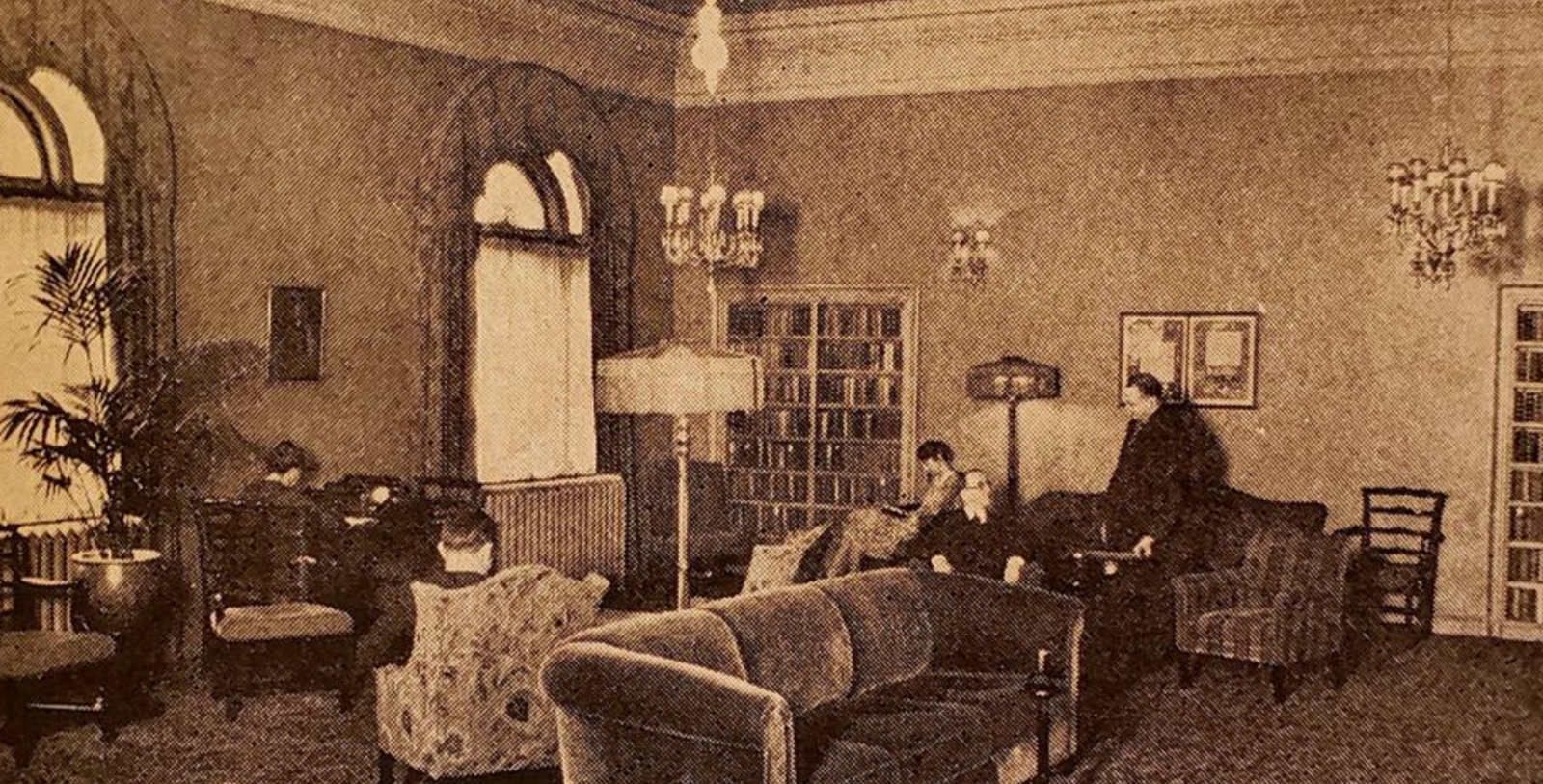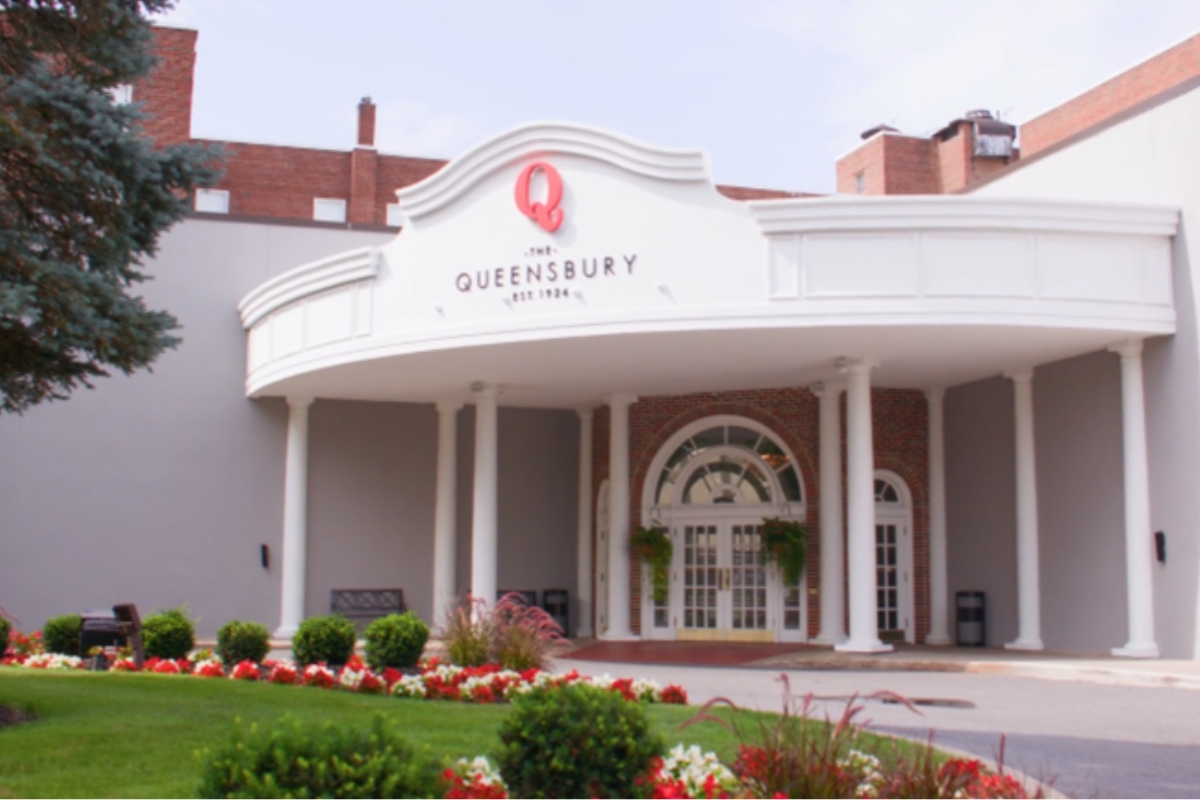Receive for Free - Discover & Explore eNewsletter monthly with advance notice of special offers, packages, and insider savings from 10% - 30% off Best Available Rates at selected hotels.
the queensbury hotel history
Discover The Queensbury Hotel, which has offered exceptional accommodations to historical figures, including as Robert F. Kennedy, since 1926.
The Queensbury Hotel, a member of Historic Hotels of America since 2017, dates back to 1926.
VIEW TIMELINEA member of Historic Hotels of America since 2017, The Queensbury Hotel has been a focal point of Glens Falls, NY, since its debut at the height of the Roaring Twenties. Its name is something of an enigma to scholars, who mainly believe it was a tribute to the British Queen Charlotte. However, some historians think it was meant to acknowledge the official the original royal charter that established Glen Falls back in 1762. But others suggests that the name “Queensbury” merely sounded elegant to the city’s residents. Regardless of the origins, the building itself was first conceived when the Chamber of Commerce, other businesspeople, and city officials began to plan its construction in 1916. They specifically intended for the new business to not only to host Adirondack tourists and national businessmen, but also to serve as a community center for the city of Glens Falls. In an unprecedented show of civic teamwork, 100 local leaders met at the Glens Falls Insurance Co. during the early spring of 1924. Together, the group unanimously voted to organize the Glens Falls Hotel Corporation and subsequently raise $600,000 to develop the building. The Glen Falls Insurance Co. then proceeded to initiate the fundraising campaign by forming a partnership with the area’s leading industry, Finch, Pruyn and Company. The two entities agreed to a deal that saw Glen Falls Insurance match whatever Finch, Pruyn, and Company invested in public stock. The program proved to be highly effective. Beginning with a purchase of $50,000, the campaign eventually raised $440,000—roughly $6 million in today—just eight days later!
After two years of continuous construction, The Queensbury Hotel finally debuted to great local acclaim. Indeed, the hotel quickly established itself as the most popular social gathering spot in Glen Falls for the business community and visiting tourists. Over the next couple of decades, The Queensbury Hotel added more guestrooms and meeting facilities in order to accommodate the rising demand. But the building was not only a popular hotel choice for families and businessmen—it was also a favorite stop for celebrities, too. Well-known musicians such as Bob Dylan, Louis Armstrong, and Kenny Rogers graced The Queensbury Hotel with their presence at one point or another. In fact, some—like Benny Goodman and Guy Lombardo—even gave live performances in the hotel’s ballroom. Additional stars that would stay at The Queensbury Hotel included Joe Frazier, Jackie Robinson, and Bob Hope! U.S. President Ronald Reagan visited, too, as did U.S. Senator Robert F. Kennedy after he won his election bid in 1964. (The day after he won the election, Kennedy fulfilled his promise to host a luncheon at the hotel.) Throughout its extensive history, the hotel has changed ownership several times. The current owner, local businessman Ed Moore, purchased the hotel in 2016. Alongside Spruce Hospitality, Moore subsequently renovated the hotel back to its former glory. The work was extensive, affecting everything from the restaurants to the main lobby. Thanks to his efforts, The Queensbury Hotel continues to be one of the best places to visit in the whole Adirondack region.
-
About the Location +
The Queensbury Hotel resides just minutes away from majestic Lake George, one of the most historic destinations in the United States. People have long inhabited the region, with the Native Americans referring to it as “Andia-ta-roc-te” for generations. Europeans originally called the site “Lac du Saint-Sacrement” after the missionary Isaac Jogues visited it in 1646. But the lake would soon became hotly contested between Great Britain and France over the next several decades. After several colonial conflicts failed to settle the dispute, the tension eventually reached its climax during the French and Indian War. Among the first actions of the war involved an invasion by a British Army force in 1755. Led by William Johnson, the command featured around 1,500 colonial troops and a few hundred Iroquois allies. Leaving from Albany, the British force eventually made its way to the area of Fort Edward by late summer. William subsequently directed the group to cut a path toward the lake’s southernmost tip, in which they renamed the body of water “Lake George” in honor of King George II. The French reacted swiftly to the threat, constructing an imposing citadel called “Fort Carillon” at the isthmus between Lake George and Lake Champlain. They also organized an attack group of equal strength under the command of Baron Ludwig August Dieskau. Dieskau’s combined French and Native American command eventually counterattacked Johnson’s encampment on September 8. The ensuring fighting was chaotic, but was nonetheless a resounding victory for the British.
In 1757, the French launched another assault toward the British, who by now had constructed Fort William Henry. Indeed, the citadel had proven to be troublesome for the French, as the British had continuously launched raids from it via a unite known as Major Robert Rogers’ Rangers. After a failed siege in the spring, a massive French army led by Louis-Joseph de Montcalm successfully captured Fort William Henry that August. (This battle was eventually romanticized in James Fenimore Cooper’s famous novel The Last of the Mohicans.) But as the British evacuated in the direction of Fort Edward, a sizeable portion of Montcalm’s command assaulted them, precipitating a massacre. The French then proceeded to torch the fort and withdrew back to Fort Carillon. Nevertheless, complete control over the region went to the British following France’s defeat in 1763. Among the most prized possession to fall into British hands was Fort Carillon, which they renamed as “Fort Ticonderoga.” Peace was short lived though, as mounting hostilities between Great Britain and its American colonies eventually fomented the American Revolutionary War. Lake George and neighboring Lake Champlain became one of the earliest battlegrounds during the conflict, when Patriot militia courageously captured Fort Ticonderoga and its munitions in 1775. The British retaliated, eventually retaking the fort two years later. A British Army under General John Burgoyne continued to push further south, where it was ultimately defeated by an American army under the command of Horatio Gates and Benedict Arnold in October.
Like Lake Champlain to the north, Lake George remained largely bucolic in character long after the American Revolutionary War had ended. Its tranquility even inspired Thomas Jefferson to write eloquently about it to his daughter in 1791. Over the following century, many Americans started to treat Lake George as a seasonal vacation retreat. Among the first groups of people to arrive were artists, such as Martin Johnson Meade and John F. Kensett. They created magnificent depictions that showcased the spectacular geography of Lake George and its environs. Such images only further galvanized visitation to the lake, making it one of the most popular holiday destinations in the Northeast by the start of the 20th century. Lake George has since maintained its status as an incredibly active tourist attraction, hosting thousands of people every year. It is particularly attractive among the nation’s energetic cultural and heritage travelers, who remain enchanted by its fascinating history. Indeed, the greater Lake George region is home to such fascinating landmarks like Fort Ticonderoga, Fort William Henry, and Saratoga National Historical Park. Cultural heritage travelers also enjoy journeying deep into the surrounding landscape of the lush Adirondack Mountains by way of the numerous serene pathways that reside within Adirondack Park. (Designated as a U.S. National Historic Landmark by the U.S. Department of the Interior, Adirondack Park itself covers an entire size of 200,000 acres.) Lake George and the communities that line its shores are a truly wonderful place to experience a memorable trip.
-
About the Architecture +
The Queensbury Hotel stands today as a wonderful interpretation of Colonial Revival architecture. Colonial Revival architecture itself is perhaps the most widely used building form in the entire United States today. It reached its zenith at the height of the Gilded Age, where countless Americans turned to the aesthetic to celebrate what they feared was America’s disappearing past. The movement came about in the aftermath of the Centennial International Exhibition of 1876, in which people from across the country traveled to Philadelphia, Pennsylvania, to commemorate the American Revolution. Many of the exhibitors chose to display cultural representations of 18th-century America, encouraging millions of people across the country to preserve the nation’s history. Architects were among those inspired, who looked to revitalize the design principles of colonial English and Dutch homes. This gradually gave way to a larger embrace of Georgian and Federal-style architecture, which focused exclusively on the country’s formative years. As such, structures built in the style of Colonial Revival architecture featured such components as pilasters, brickwork, and modest, double-hung windows. Symmetrical designs defined Colonial Revival-style façades, anchored by a central, pedimented front door and simplistic portico. Gable roofs typically topped the buildings, although hipped and gambrel forms were used, as well. This form remained immensely popular for years until largely petering out in the late 20th century. Nevertheless, architects today still rely upon Colonial Revival architecture, using the form to construct all kinds of residential buildings and commercial complexes. Many buildings constructed with Colonial Revival-style architecture are even identified as historical landmarks at the state level, and the U.S. Department of the Interior has even listed a few of them in the U.S. National Register of Historic Places.
-
Famous Historic Guests +
Bob Hope, comedian and patron of the United Service Organization (USO).
Louis Armstrong, jazz musician regarded as one of the most influential figures in the genre.
Guy Lombardo, bandleader and violinist who sold anywhere between 100 and 300 million records worldwide
Joe Frazier, Olympic gold medalist (1964) and undisputed heavyweight champion (1970 – 1973) in boxing.
Jackie Robinson, star second basemen for the Brooklyn Dodgers who became the first African American to play Major League Baseball.
Benny Goodman, jazz clarinetist and band leader remembered to history as the “King of Swing.”
Kenny Rogers, country music musician known for albums like The Gambler and Kenny.
Bob Dylan, Grammy-Award musician known for such singles as “Blowin’ in the Wind,” and “The Times They Are a-Changin’.”
Robert F. Kennedy, U.S. Attorney General and Senator from New York (1965 – 1968)
Ronald Reagan, 40th President of the United States (1981 – 1989)

































